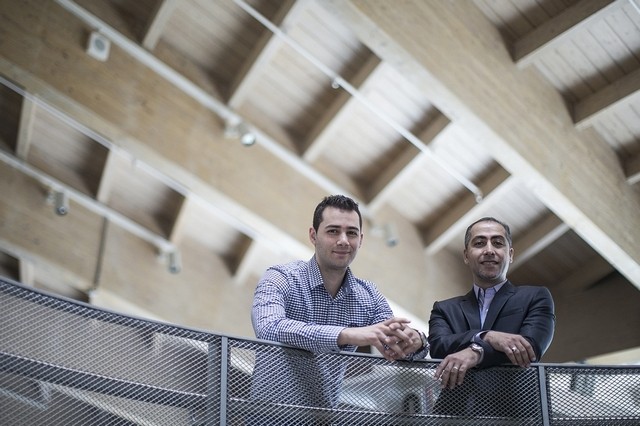Posted initially in The National on May 11th 2017. The original post can be found here
ABU DHABI // Scientists at the Masdar Institute have created a more efficient and potentially cheaper catalytic converter that can help cut the emission of harmful gases released into the environment from petrol and diesel engines.
Catalytic converters, designed to convert toxic exhaust fumes from vehicle exhausts into less harmful gases, are fitted as standard on most modern cars.
Dr Rashid Abu Al Rub and Oraib Al Ketan experimented with the distribution of air in traditional converters to improve on technology that has been in place since the mid-1970s.
Traditional catalytic converters, Mr Al Ketan said, consist of a ceramic layer that looks like a honeycomb on the inside. This is inlaid with precious metals that capture harmful substances from engine exhaust gases.
The scientists are in the process of obtaining a patent for their invention and cannot reveal all the details about their design. But they said theirs was more complex than the traditional honeycomb structure in a way that maximises the internal surface area of the device.
"The larger surface area means there is more interaction between gases leaving the engine and the precious metals that scrape out the harmful substances," Mr Al Ketan said.
In terms of absorption, the new device is 30 per cent more efficient, he said. This means the new converter can be smaller than those now on the market. It can also meet emissions standards for a lower price.
"One more aspect is the interconnectivity and smoothness of the material," he said, explaining that this improved circulation of exhaust gases through the device and thus increases the vehicle’s fuel efficiency.
Dr Abu Al Rub said an additional benefit was how quickly the new converter reaches optimum efficiency. Traditional devices take up to five minutes to warm up, particularly in colder countries, while the new invention starts performing at top efficiency a minute after a car is in motion.
This is also good news for reducing emissions, Dr Abu Al Rub said.
"Usually the converter needs to be placed close to the engine where the exhaust temperature is higher," he said. "This gives freedom to place the converter anywhere, [positively] affecting the operation of the engine.”
